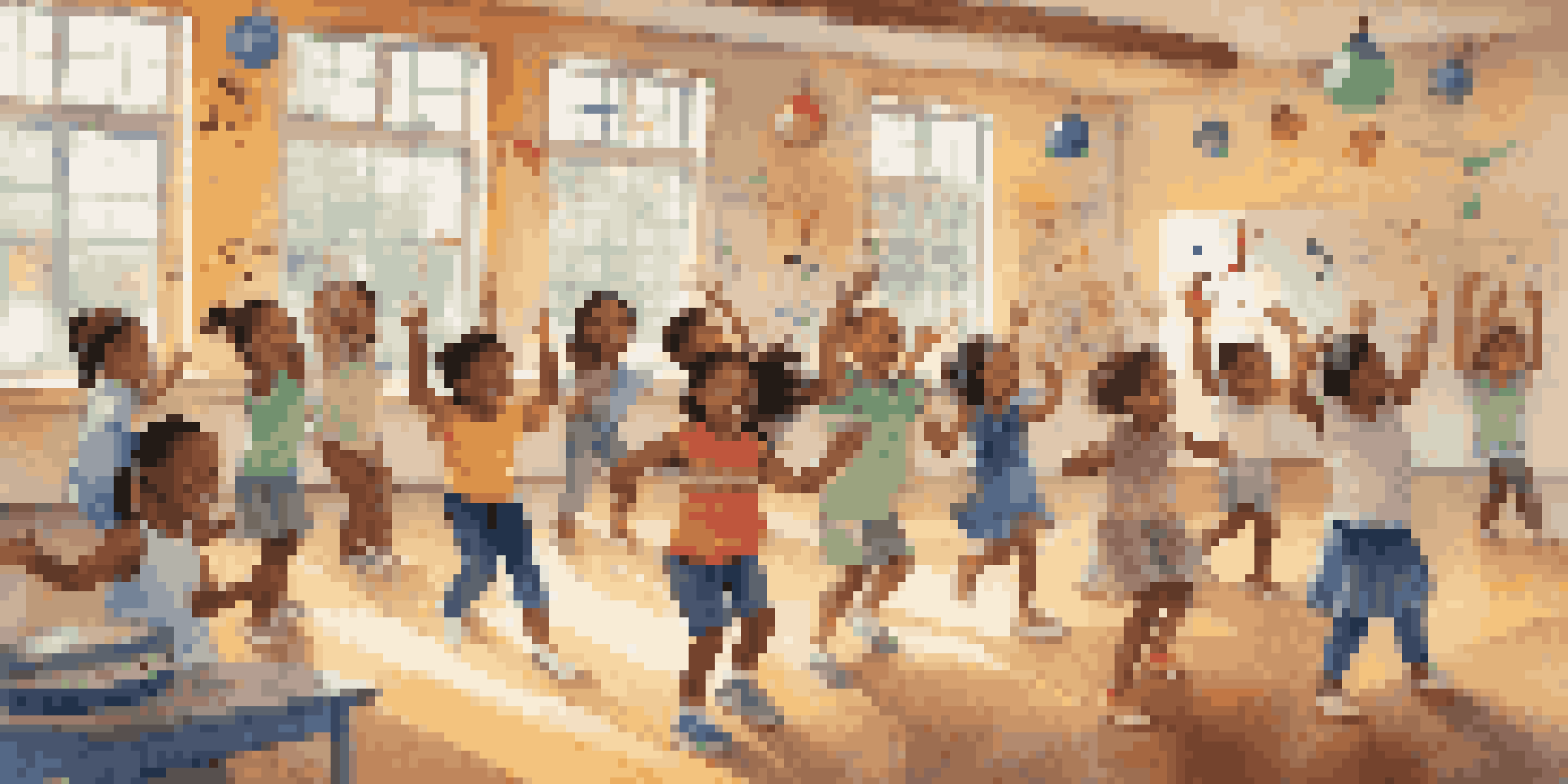The Importance of Rhythmic Music in Motor Skills Development

Understanding Motor Skills and Their Importance
Motor skills are essential for everyday activities, from tying shoelaces to playing sports. They can be categorized into two types: gross motor skills, which involve larger movements such as walking, and fine motor skills, which include smaller actions like writing. Developing these skills is crucial, especially in children, as they lay the foundation for coordination, balance, and even cognitive development.
Music can change the world because it can change people.
Imagine teaching a toddler to throw a ball; it’s not just about the act of throwing but also about developing hand-eye coordination and timing. When children engage in activities that require precise movements, they are essentially training their brains and bodies to work together. This is where rhythmic music comes into play, acting as a fun and engaging medium for practicing these skills.
Moreover, strong motor skills can lead to increased confidence in physical activities, which is vital for overall health and well-being. As children and adults develop these skills, they become more willing to participate in sports and recreational activities, ultimately fostering a more active lifestyle.
The Role of Rhythm in Movement
Rhythm is a powerful tool that connects music and movement, playing a significant role in how we coordinate our bodies. Think of dancing: the beat guides our movements, helping us stay in sync with the music. This synchronization not only makes dancing enjoyable but also enhances our ability to move fluidly and efficiently.

Incorporating rhythmic music into physical activities can help individuals, especially children, learn to anticipate and time their movements better. For example, clapping to a beat or stepping in time with music helps reinforce body awareness and timing. This practice can translate into improved performance in sports and daily tasks.
Furthermore, rhythmic music can make repetitive movements feel less tedious. By adding a layer of enjoyment through music, individuals are more likely to engage in motor skill development activities, leading to better outcomes over time.
Benefits of Rhythmic Music in Early Childhood Development
For young children, exposure to rhythmic music can enhance their physical development in several ways. Activities like bouncing, clapping, or moving to music encourage basic motor skills while providing a sense of fun. This joyful connection to movement can foster a lifelong love for physical activity.
The beautiful thing about learning is that no one can take it away from you.
Additionally, participating in music-related activities can improve cognitive skills, such as memory and concentration. Learning to follow a rhythm or mimic movements can help children develop listening skills and focus, which are essential for overall learning. It’s like a two-for-one deal: music enhances motor skills while also boosting cognitive abilities.
Moreover, rhythmic music often involves social interaction, such as group dancing or playing instruments together. This interaction not only builds motor skills but also encourages teamwork and communication, vital social skills for children as they grow.
The Connection Between Music and Brain Development
Research shows that music engages multiple areas of the brain, promoting growth and connectivity. When children listen to or create music, they stimulate neural pathways that are essential for both motor and cognitive skills. It’s fascinating how something as simple as a melody can impact brain development!
Engaging in rhythmic activities requires the brain to process auditory information while coordinating physical responses. This dual engagement can enhance brain functioning, leading to improved motor skills and a greater capacity for learning. It’s like giving your brain a workout while having fun!
Incorporating rhythmic music into daily routines can also help children manage stress and emotions, which is beneficial for overall development. A calm mind can lead to better focus and increased motivation to practice motor skills, creating a positive feedback loop.
Practical Ways to Incorporate Rhythmic Music
Parents and educators can easily integrate rhythmic music into daily activities. Consider playing music during playtime, where children can dance, jump, or clap along. This not only makes the activity enjoyable but also encourages physical movement that reinforces motor skills.
Another practical approach is to use instruments like drums or tambourines. These instruments allow children to explore rhythm while promoting fine motor skills. Tapping along to a beat with these instruments can be an exciting way for children to learn coordination.
Finally, consider organizing group activities that involve music, such as dance classes or music circles. These social settings provide opportunities for children to practice their motor skills while having fun with peers, reinforcing the importance of rhythm in their development.
Challenges in Motor Skills Development
Despite the many benefits of rhythmic music, some children may face challenges in developing motor skills. Factors such as developmental delays, lack of exposure to physical activities, or limited access to musical resources can hinder progress. Recognizing these challenges is the first step toward addressing them.
For instance, children with motor coordination difficulties may struggle to keep time with music. However, with patience and appropriate support, teachers and parents can help them find their rhythm. Adapting activities to suit individual needs can make a significant difference in their development.
Moreover, understanding that each child develops at their own pace is crucial. Providing encouragement and celebrating small milestones can motivate children to keep improving their motor skills through rhythmic music.
Conclusion: Embracing Rhythmic Music for Growth
In conclusion, rhythmic music offers a multitude of benefits for motor skills development. By combining fun and movement, it engages children and adults alike, making the learning process enjoyable. The impact of rhythm on our ability to move and coordinate is profound, and it’s a resource that should be embraced.
As we’ve explored, the connection between music and movement goes beyond simple enjoyment; it plays a vital role in cognitive and physical development. By incorporating rhythmic music into daily routines, we can foster stronger motor skills and support overall growth.

So, whether you’re a parent, educator, or simply a music enthusiast, consider the power of rhythm in your life. Embrace it, dance to it, and let it guide you and those around you toward a more active and fulfilling lifestyle.